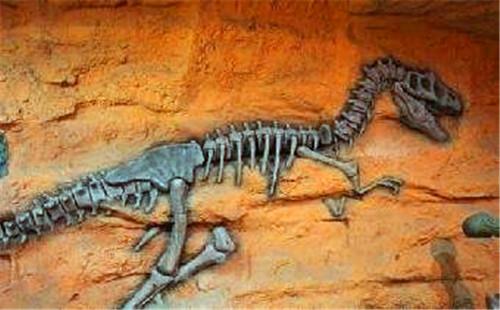It would be hard to think of a more overlooked person in the history of paleontology than Mary Anning, but in fact there was one who came painfully close. His name was Gideon Algernon Mantell and he was a country doctor in Sussex.
在古生物学史上,很难想得出还有谁比玛丽·安宁更不受人重视,但实际上还有一个人的情况跟她差不多。他叫吉迪恩·阿尔杰农·曼特尔,是苏塞克斯的一名乡村医生。

Mantell was a lanky assemblage of shortcomings—he was vain, self-absorbed, priggish, neglectful of his family—but never was there a more devoted amateur paleontologist. He was also lucky to have a devoted and observant wife. In 1822, while he was making a house call on a patient in rural Sussex, Mrs. Mantell went for a stroll down a nearby lane and in a pile of rubble that had been left to fill potholes she found a curious object—a curved brown stone, about the size of a small walnut.
曼特尔有一大堆不足之处——他虚荣心强,只顾自己,自命不凡,不关心家庭——但再也找不出一名像他这样投入的业余古生物学工作者。他还很有运气,有一位既忠心耿耿又留心观察的太太。1822年,他去苏塞克斯农村出诊的时候,曼特尔太太正顺着附近的一条小路散步,在一堆用来填平路面凹坑的碎石里发现了一样古怪的东西——一块弧形的棕色骨头,大约有小胡桃那么大小。
Knowing her husband's interest in fossils, and thinking it might be one, she took it to him. Mantell could see at once it was a fossilized tooth, and after a little study became certain that it was from an animal that was herbivorous, reptilian, extremely large—tens of feet long—and from the Cretaceous period. He was right on all counts, but these were bold conclusions since nothing like it had been seen before or even imagined.
她认为那是一块化石。她知道自己的丈夫对化石很感兴趣,便拿给了他。曼特尔马上看出,那是一颗牙齿的化石。稍加研究以后,他断定,这是一颗动物牙齿,那种动物生活在白垩纪,食草,爬行,体形庞大——有几十米长。他的估测完全正确;但他的胆量也真够大的,因为在此之前,即使在想像中,谁也没有见过这样的东西。












